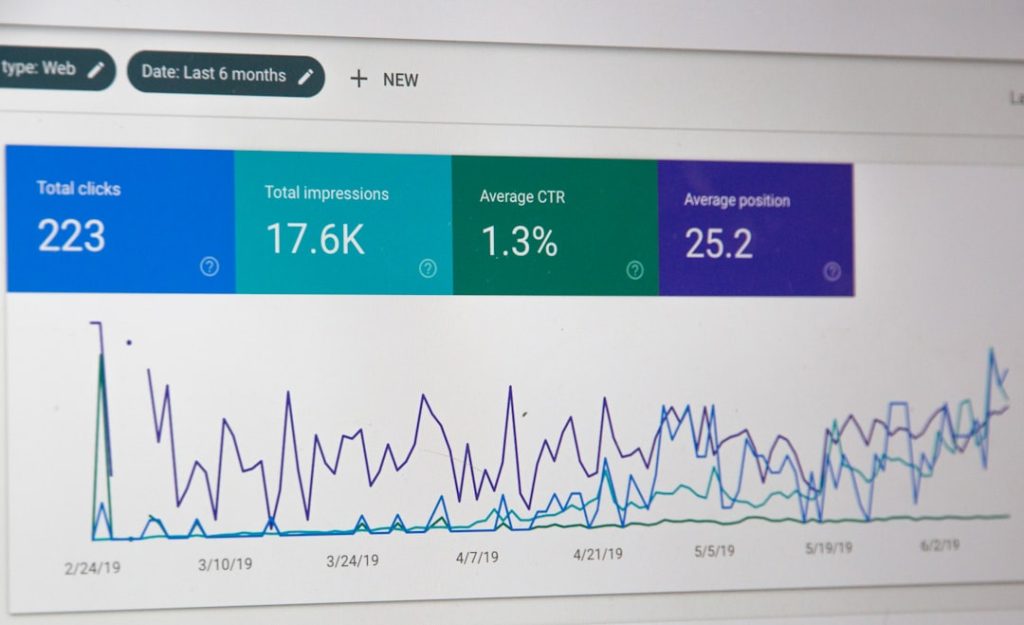SAS, which stands for Statistical Analysis System, is a powerful software suite that has become synonymous with data analytics in various industries. Originally developed in the 1960s for agricultural research, SAS has evolved into a comprehensive platform that offers a wide array of tools for data management, advanced analytics, and predictive modeling. Its robust capabilities allow organizations to analyze vast amounts of data efficiently, making it an invaluable asset in today’s data-driven world.
The software is particularly favored for its user-friendly interface and extensive documentation, which facilitate both novice and experienced analysts in extracting meaningful insights from complex datasets. The significance of SAS in the realm of data analytics cannot be overstated. With its ability to handle large volumes of data and perform intricate statistical analyses, SAS has become a go-to solution for businesses seeking to leverage data for strategic decision-making.
The platform supports various programming languages, including SQL and Python, allowing users to integrate it seamlessly into their existing workflows. As organizations increasingly recognize the value of data in driving growth and innovation, SAS stands out as a critical tool that empowers them to harness the full potential of their data assets.
Key Takeaways
- SAS Data Analytics is a powerful tool for analyzing and interpreting data to make informed business decisions.
- Data analytics is crucial for businesses to gain insights, identify trends, and make strategic decisions.
- SAS provides a comprehensive platform for data analysis, offering a wide range of tools and techniques.
- Data visualization with SAS allows for the creation of clear and impactful visual representations of data.
- SAS enables businesses to uncover patterns, trends, and correlations within their data, leading to valuable insights and opportunities.
Understanding the Importance of Data Analytics
Data analytics has emerged as a cornerstone of modern business strategy, enabling organizations to make informed decisions based on empirical evidence rather than intuition alone. In an era where data is generated at an unprecedented rate, the ability to analyze and interpret this information is crucial for maintaining a competitive edge. Companies that effectively utilize data analytics can identify trends, optimize operations, and enhance customer experiences, ultimately leading to increased profitability and market share.
The insights derived from data analytics can inform everything from product development to marketing strategies, making it an essential component of any successful business model. Moreover, the importance of data analytics extends beyond mere operational efficiency; it also plays a vital role in risk management and compliance. By analyzing historical data and identifying patterns, organizations can anticipate potential challenges and mitigate risks before they escalate.
This proactive approach not only safeguards assets but also fosters a culture of continuous improvement within the organization. As regulatory requirements become more stringent across various industries, the ability to leverage data analytics for compliance purposes has become increasingly important. In this context, organizations that invest in robust data analytics capabilities are better positioned to navigate the complexities of today’s business landscape.
Leveraging SAS for Data Analysis

SAS provides a comprehensive suite of tools that enable users to perform a wide range of data analysis tasks with ease. One of the standout features of SAS is its ability to handle diverse data types, including structured and unstructured data, which is essential in today’s multifaceted data environment. Users can import data from various sources, such as databases, spreadsheets, and even big data platforms, allowing for a holistic view of their information landscape.
Once the data is ingested into SAS, analysts can employ a variety of statistical techniques to uncover insights that drive decision-making processes. In addition to its analytical capabilities, SAS offers powerful data manipulation features that streamline the process of preparing data for analysis. Users can clean, transform, and aggregate data using intuitive procedures that require minimal coding knowledge.
This accessibility makes SAS an attractive option for organizations looking to empower their teams with self-service analytics capabilities. Furthermore, SAS’s extensive library of pre-built functions and procedures allows analysts to perform complex analyses without needing to develop algorithms from scratch. This combination of flexibility and ease of use positions SAS as a leading choice for organizations aiming to leverage data analytics effectively.
Exploring Data Visualization with SAS
| Chapter | Metrics |
|---|---|
| Chapter 1 | Number of Pages: 20 |
| Chapter 2 | Number of Visualizations: 15 |
| Chapter 3 | Number of Data Sets: 10 |
| Chapter 4 | Number of Examples: 25 |
Data visualization is a critical aspect of data analytics that enhances the interpretability of complex datasets. SAS excels in this area by providing a range of visualization tools that allow users to create compelling graphical representations of their data. From simple bar charts and line graphs to more sophisticated heat maps and scatter plots, SAS enables analysts to present their findings in a visually engaging manner.
This capability is particularly important when communicating insights to stakeholders who may not have a technical background; effective visualizations can bridge the gap between complex analyses and actionable insights. Moreover, SAS’s visualization tools are designed to be interactive, allowing users to explore their data dynamically. Analysts can create dashboards that provide real-time updates on key performance indicators (KPIs), enabling organizations to monitor their performance continuously.
This interactivity fosters a deeper understanding of the underlying trends and patterns within the data, empowering decision-makers to act swiftly based on the most current information available. As businesses increasingly rely on visual storytelling to convey their analytical findings, SAS’s robust visualization capabilities position it as an essential tool for effective communication in the data analytics landscape.
Uncovering Patterns and Trends with SAS
One of the most powerful aspects of SAS is its ability to uncover hidden patterns and trends within large datasets. By employing advanced statistical techniques such as regression analysis, clustering, and time series analysis, users can identify relationships between variables that may not be immediately apparent. This capability is invaluable for organizations seeking to optimize their operations or enhance their product offerings based on customer behavior and preferences.
For instance, retailers can analyze purchasing patterns to tailor marketing campaigns or adjust inventory levels accordingly. Additionally, SAS provides tools for exploratory data analysis (EDA), which allows analysts to visualize and summarize datasets before diving into more complex analyses. EDA is crucial for understanding the underlying structure of the data and identifying any anomalies or outliers that may skew results.
By leveraging these capabilities, organizations can make more informed decisions based on a comprehensive understanding of their data landscape. The ability to uncover patterns and trends not only enhances operational efficiency but also drives innovation by revealing new opportunities for growth.
Harnessing Predictive Analytics with SAS

Accurate Forecasting with Advanced Modeling Capabilities
SAS offers robust predictive modeling capabilities that allow users to build models that forecast trends and behaviors with remarkable accuracy. By leveraging techniques such as machine learning and artificial intelligence, analysts can create sophisticated models that account for numerous variables and interactions within the data.
Proactive Decision-Making with User-Friendly Tools
The predictive power of SAS’s tools enables businesses to make proactive decisions rather than reactive ones, positioning them ahead of competitors who may still rely on traditional methods. Furthermore, the platform is designed to be user-friendly, allowing analysts with varying levels of expertise to develop models without extensive programming knowledge. Automated processes for model selection and validation streamline what can often be a complex and time-consuming task.
Empowering Businesses to Harness the Power of Their Data
As organizations increasingly seek to leverage predictive analytics for strategic advantage, SAS stands out as a leader in this space, offering solutions that empower businesses to harness the power of their data effectively.
Utilizing SAS for Business Intelligence
Business intelligence (BI) encompasses the strategies and technologies used by organizations to analyze business information and support decision-making processes. SAS plays a pivotal role in this domain by providing comprehensive BI solutions that integrate seamlessly with existing systems. With its powerful reporting capabilities, users can generate detailed reports that summarize key metrics and performance indicators across various departments.
This centralized access to information fosters collaboration among teams and ensures that everyone is aligned with organizational goals. Moreover, SAS’s BI tools enable organizations to conduct ad-hoc analyses quickly, allowing decision-makers to explore specific questions or scenarios without waiting for formal reports. This agility is crucial in today’s fast-paced business environment, where timely insights can make all the difference in capitalizing on opportunities or mitigating risks.
By leveraging SAS for business intelligence, organizations can transform raw data into actionable insights that drive strategic initiatives and enhance overall performance.
The Future of Data Analytics with SAS
As we look toward the future of data analytics, it is clear that SAS will continue to play a significant role in shaping the landscape. With advancements in technology such as artificial intelligence and machine learning becoming increasingly integrated into analytics processes, SAS is well-positioned to lead the charge in developing innovative solutions that meet evolving business needs. The company has consistently invested in research and development to enhance its offerings, ensuring that users have access to cutting-edge tools that empower them to extract maximum value from their data.
Furthermore, as organizations increasingly prioritize ethical considerations in their use of data analytics, SAS is committed to promoting responsible practices within the industry. By providing tools that support transparency and accountability in analytics processes, SAS helps organizations navigate the complexities associated with data privacy and security concerns. As we move forward into an era defined by rapid technological advancements and growing reliance on data-driven decision-making, SAS will undoubtedly remain at the forefront of this evolution, equipping businesses with the tools they need to thrive in an ever-changing landscape.
If you’re interested in learning more about how SAS data analytics is applied in various industries, you might find the “About Us” section of the Xosap website insightful. It provides information on the company’s expertise and services in data analytics, which could be particularly useful for understanding real-world applications of SAS tools. You can explore this further by visiting their page here.
FAQs
What is SAS data analytics?
SAS data analytics refers to the process of analyzing and interpreting data using SAS software. It involves using statistical techniques, machine learning algorithms, and other tools to gain insights and make data-driven decisions.
What are the benefits of using SAS for data analytics?
SAS offers a wide range of tools and capabilities for data analytics, including data management, statistical analysis, and predictive modeling. It is known for its reliability, scalability, and ability to handle large volumes of data.
What industries use SAS data analytics?
SAS data analytics is used across various industries, including finance, healthcare, retail, telecommunications, and government. It is particularly popular in industries that require advanced analytics and data management capabilities.
What are some common applications of SAS data analytics?
Common applications of SAS data analytics include customer segmentation, fraud detection, risk management, forecasting, and marketing analytics. It is also used for data visualization and reporting.
What skills are required for SAS data analytics?
Professionals working in SAS data analytics typically need skills in data manipulation, statistical analysis, programming (SAS and possibly other languages), and data visualization. Knowledge of machine learning and big data technologies may also be beneficial.
How does SAS data analytics compare to other data analytics tools?
SAS is known for its comprehensive suite of analytics tools and its ability to handle complex data management and analysis tasks. It is often used in enterprise settings where reliability and scalability are important. However, there are other popular data analytics tools such as R, Python, and Tableau that offer different strengths and capabilities.
